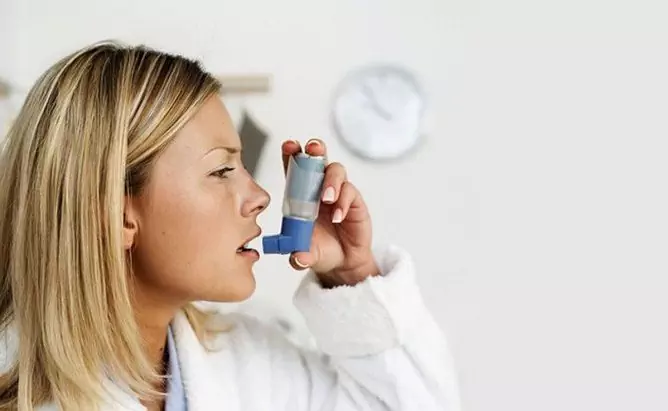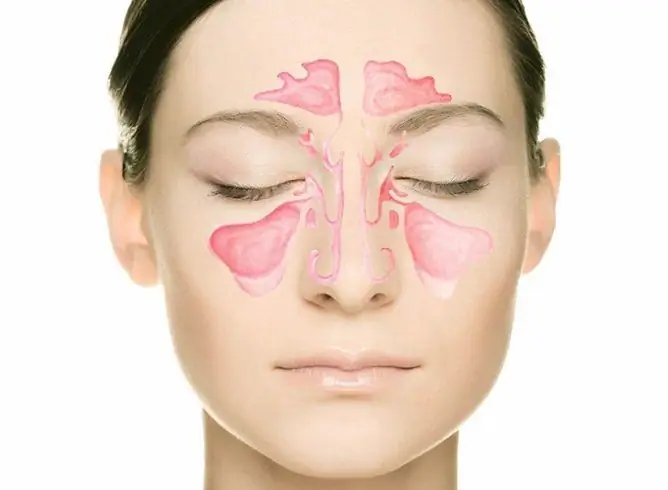- Author Rachel Wainwright [email protected].
- Public 2023-12-15 07:39.
- Last modified 2025-11-02 20:14.
Furuncle

A boil is a painful purulent-necrotic boil, which is a consequence of inflammation of the hair follicles, sebaceous glands and surrounding connective tissues caused by pyogenic bacteria (Staphylococcus aureus).
A furuncle appears on the skin in the form of a follicular pustule against a background of red erythema with a boil shaft (necrosis) in the center, ranging in size from a pea to a walnut. After the rejection of necrotic tissue is carried out, healing occurs with the formation of scars. Often, boils appear in hairy areas on the thighs, chest, back, groin, neck, buttocks, face, armpits, and nape. Localization of boils on the face can lead to purulent meningitis and sepsis. Large or several closely spaced boils are called carbuncles. These growths are usually much more painful and deeper, and their treatment may require antibiotics, since there is a possibility of inflammation entering the bloodstream.
Causes of the boil
The cause of the boil is the penetration of bacteria (mainly Staphylococcus aureus) into the hair follicle. The main causes of a boil are skin pollution and microtrauma, increased sebum secretion and sweating, decreased immunity, metabolic disorders and unhealthy diet.
Symptoms and complications of boils
Symptoms of boils are soreness, pus, redness, itching, and swelling in the area where it appears. With untimely treatment, boils can spread to nearby parts of the body, leading to the appearance of acne phlebitis, septicemia, cavernous thrombosis, sepsis, abscesses, phlegmon of the upper lip, meningitis and the lateral slope of the nose.
Treatment of boils
It is possible to avoid the appearance of boils by observing the rules of personal hygiene and timely treatment of skin microtraumas. Treatment of a boil begins with an antiseptic treatment of the skin around the inflammation. Then, using pure ichthyol, UHF therapy or dry heat, the formed boil is treated and opened. Next, pus and necrotic tissue are removed using a wet-drying dressing with a hypertonic solution, after which a dressing with antibacterial ointments is applied to the remaining ulcer. When boils appear in the area of the nose, cheeks and upper lip, antibiotics that are active against staphylococci are additionally prescribed, and in some cases autohemotherapy is prescribed.
Treatment of a boil at home

The main rule for self-treatment of a boil is to observe the rules of personal hygiene, which means washing your hands with antibacterial soap before and after contact with the boil. An antibacterial agent should be applied to the affected area three times a day and warm compresses 4 times a day for 15 minutes. After that, a thick layer of dry gauze should be applied to the boil and a bandage should be made. In no case should you open the boil, and if it opened on its own, you need to carefully remove the pus, then treat the remaining wound with hydrogen peroxide and apply a dry bandage.
Treatment of a boil with folk remedies
There are several popular recipes used in the treatment of boils at home, namely:
- Stir two raw yolks, a little flour, a tablespoon of honey and half a teaspoon of salt until a thick mass resembling clay is formed. The finished mass in the form of compresses must be applied to the boil until it opens;
- Sprinkle rye bread generously with salt and chew it for a long time until a gruel is formed. The finished mass must be applied to the boil and bandaged;
- Mix a tablespoon of natural honey with wheat flour and mold a cake, which must be applied to the abscess, apply a gauze bandage and keep until opening;
- Grind the dry inflorescence of calendula into a powder, then mix 10 grams of the finished dry mixture with the same amount of petroleum jelly. Spread the finished ointment in a thin layer over the inflamed surface and keep for 15-20 minutes;
- Grate a piece of laundry soap and mix with four baked onions. Apply the prepared gruel to the boil and apply a gauze bandage;
- Mix two tablespoons of brittle buckthorn bark, fennel fruit, warty birch leaves, tricolor violet grass, black elderberry flowers and one tablespoon of licorice roots. Then pour one tablespoon of the resulting mixture with a glass of boiling water and boil in a water bath for 15 minutes. Cool the finished liquid, filter and drink half a glass three times a day.
YouTube video related to the article:
The information is generalized and provided for informational purposes only. At the first sign of illness, see your doctor. Self-medication is hazardous to health!






